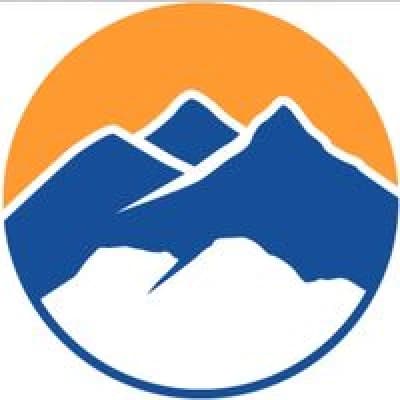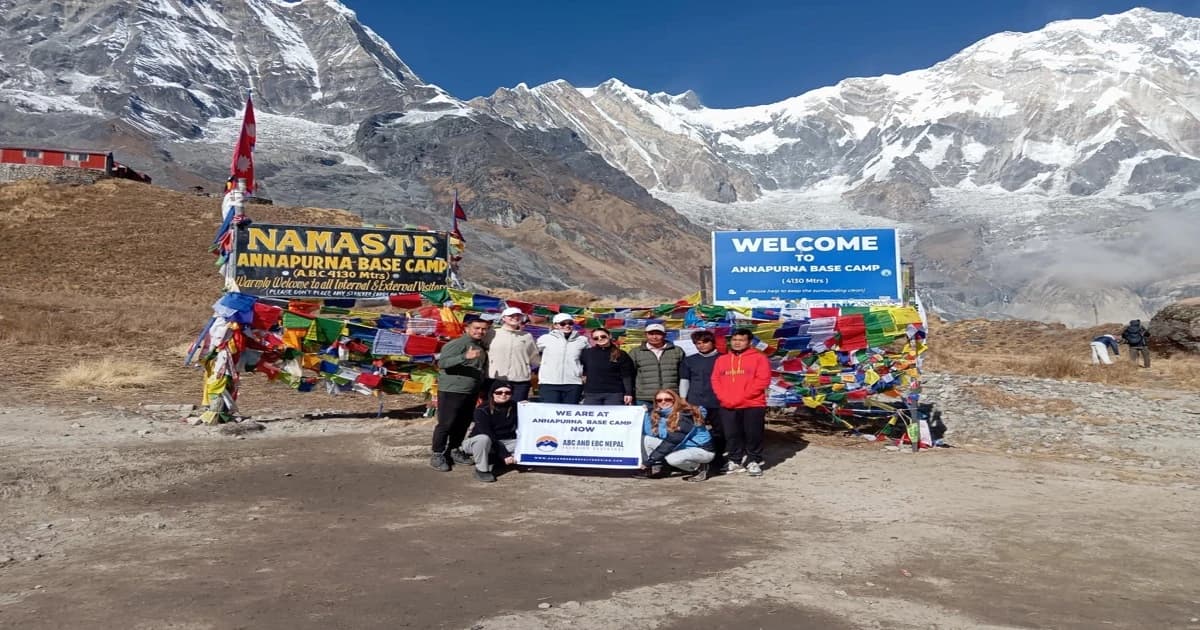Trekking to Annapurna Base Camp (ABC) is one of the most popular and rewarding adventures in Nepal. Nestled at an altitude of 4,130 meters (13,550 ft), the trek offers a spectacular journey through lush forests, terraced fields, traditional villages, and up-close views of the majestic Annapurna range. If you're planning or considering trekking to Annapurna Base Camp, here are some of the most frequently asked questions (FAQs) to help you prepare.
1. How long is the Annapurna Base Camp trek?
We have three different itineraries for the Annapurna base camp trek – 6, 11 and 15 days. The trek starts either at Birethanti or Jhinu depending on the itinerary you want to take. The 15-day itinerary takes you to the Annapurna base camp via Ghorepani while the 6-day itinerary starts and finishes at Jhinu.
2. What is the best time for Annapurna Base Camp Trekking?
The best seasons are:
- Spring (March to May): Clear skies, rhododendron blooms, and pleasant weather.
- Autumn (September to November): Best mountain views, stable weather, and vibrant landscapes.
The trek is also possible in winter (December to February) with proper preparation, though it can be very cold. Monsoon (June to August) is generally not recommended due to heavy rain and leeches.
3. How difficult is the trek?
The trekking is considered moderately difficult. While it doesn't require technical climbing. The trekkers should be prepared for:
- Steep ascents and descents
- High altitude (up to 4,130m)
- Walking 5–7 hours a day
Good physical fitness and some trekking experience are helpful, but beginners can complete it with determination and proper planning.
4. Do I need a guide or porter?
While solo trekking is allowed, many trekkers choose to hire a licensed guide and/or porter for:
- Navigation and safety
- Cultural insights
- Reducing physical strain
We operate fully guided trekking adventures in Nepal and our trekking adventure to Annapurna base camp is also led by highly experienced trekking guides and support staff.
5. What permits are required for ABC trekking?
While trekking to Annapurna Base Camp, you will need two permits:
- Annapurna Conservation Area Permit (ACAP) – NPR 3,000 (approx. USD 23)
- Trekkers' Information Management System (TIMS) card – NPR 2,000 (approx. USD 15)
We take care of all necessary permits while you are trekking with us.
6. What is the maximum altitude on the ABC trek?
The highest point is Annapurna Base Camp at 4,130 meters (13,550 ft). You’ll gain elevation gradually to reduce the risk of altitude sickness.
7. Is altitude sickness a concern?
Yes. Though the ABC trek doesn’t go extremely high compared to other Himalayan routes, Altitude Sickness (AMS) can still affect some trekkers above 2,500 meters. Symptoms may include headache, nausea, fatigue, or dizziness.
To prevent AMS:
- Ascend gradually
- Stay hydrated
- Avoid alcohol
- Take acclimatization days
- Consider Diamox with a doctor's advice
8. Where does the trek start and end?
The trek starts from Nayapul or Jhinu, reachable by road from Pokhara. The trek typically ends at Jhinu Danda, followed by a jeep ride back to Pokhara.
9. What is the accommodation like on the trail?
You’ll stay in teahouses – local lodges offering basic rooms, shared bathrooms, and traditional meals. Some offer hot showers, wi-fi and limited charging facilities, often at a small cost.
10. What should I pack for the ABC trek?
Essentials include:
- Sturdy trekking boots
- Warm layers (especially for higher altitudes)
- Rain jacket
- Sleeping bag (recommended)
- Water purification tablets or filter
- Sunscreen, sunglasses, hat
- First aid kit
Pack light but be prepared for varying weather conditions. Check this list of essentials to pack for the adventure in details.
11. Is the trek safe?
Yes, the ABC trek is considered one of the safest trekking routes in Nepal, with well-maintained trails and regular foot traffic. However, always monitor weather conditions, especially during winter or monsoon, and be cautious in remote areas.
12. Is drinking water available?
Yes, water is available in villages and teahouses. However, it’s not safe to drink untreated water. You can use:
- Water purification tablets
- Steripen or filter
- Buy bottled water (discouraged due to environmental impact)
13. Are there ATM facilities on the trail?
No ATMs are available after leaving Pokhara. Carry enough Nepali Rupees in cash for the entire trek. Most teahouses don’t accept cards.
We hope these frequently asked questions about the Annapurna base camp trekking gives you some information about the adventure. Whether you're a seasoned trekker or a first-timer, being informed and well-prepared can make all the difference.
If you have more specific questions or need help planning your trip, feel free to ask.





